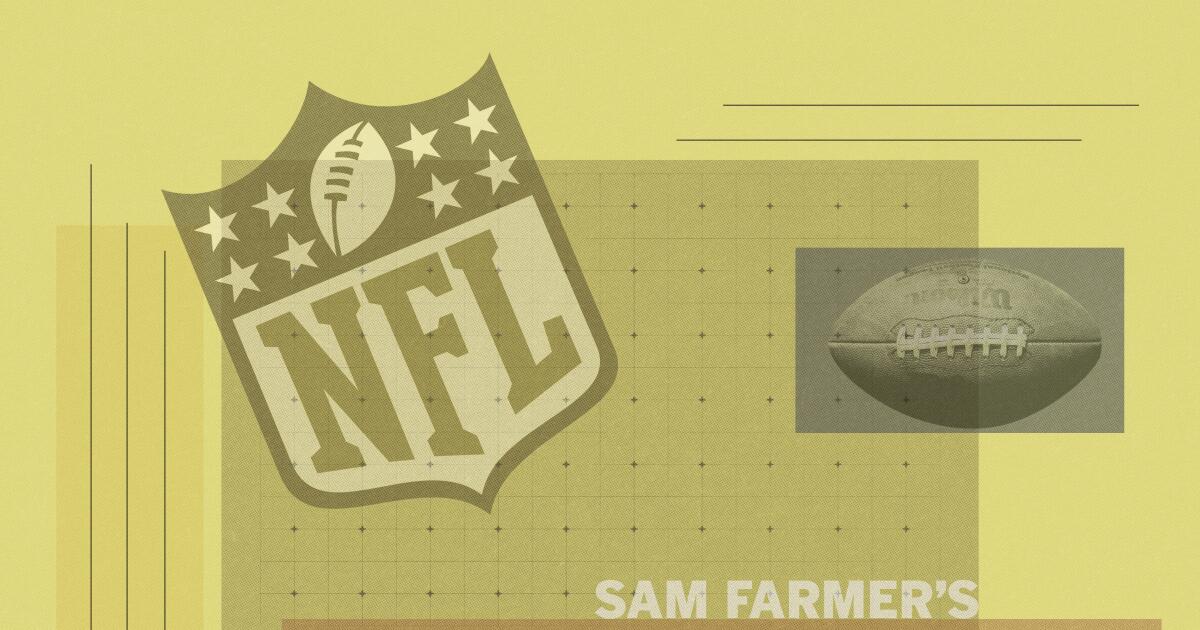Will Jayden Maiava and Husan Longstreet remain USC quarterbacks?
During each of his last two Decembers at USC, Lincoln Riley faced a critical decision at quarterback: Pursue a new passer in the portal or trust the one who’s next in line?
In each case, Riley has opted to keep with the known quantity. But as his fourth regular season at USC comes to a close Saturday against UCLA, the coach could face a more complicated conundrum at the position this offseason.
Run it back with Jayden Maiava, who statistically has been one of the more accomplished passers in college football this season? Or turn the page to electric five-star freshman Husan Longstreet, who might not be willing to wait much longer for his shot as USC’s starting quarterback?
It’s a question that has confounded many college football coaches during the transfer portal era, as the notion of a top quarterback prospect patiently waiting his turn to be named a starter has become increasingly rare. Of the top dozen quarterbacks in the class of 2024, six have already transferred. From 2023, it’s seven of the top 12. From 2022, it’s eight. And of those who do stay, only a handful were still waiting to start as sophomores.

USC quarterback Jayden Maiava looks for an open receiver during a win over Michigan at the Coliseum on Oct. 11.
(Gina Ferazzi/Los Angeles Times)
It’s not clear yet if that’ll be the case with Longstreet. But this week, Riley made a clear plea for the young passer’s patience when asked about the challenge of convincing a top prospect to stick around in a reserve role.
“For any player, especially a quarterback, I don’t know if this would be the right time to leave this place,” Riley said. “This thing is getting pretty good. And I think a lot of people recognize that, both in what we have now and what we’re bringing in, where this thing is going.”
Speaking to Longstreet’s situation, Riley pointed to his track record with quarterbacks who waited their turn.
“Other than Jalen Hurts, we haven’t had any quarterback that’s come in and was the guy right away,” Riley said. “Every one of them, all the guys that did all the things, they all had that time. And if you ask them now, maybe then they wanted to be playing of course, the competitor in them. But if you ask them now, they’re all damn happy they had time and it made a big difference. Because when it became their time, they were ready.”

USC quarterback Husan Longstreet scores a touchdown against the Missouri State at the Coliseum on Aug. 30.
(Luke Hales/Getty Images)
Maiava, of course, has been more than just a mere caretaker. After all, he leads the Big Ten in passing yards per game this season (3,174), while also leading USC in rushing touchdowns (6). With Maiava and his cannon arm at the helm, USC’s offense has returned to its right place as one of college football’s most explosive outfits, producing 51 plays of 20-plus yards this season, fourth-most in the nation.
On paper, there’s no reason to think Riley would be eager to replace Maiava, who has rejuvenated both the read-option game and the downfield aspect of his offense since taking over for Miller Moss last season. But the conversation about USC’s future at the position was complicated by the second half of the season, during which Maiava stumbled against stiffer competition.
During the Trojans’ first six games, Maiava appeared to have taken a major step forward. He was completing 72% of his passes, up 12% from the previous year. He was averaging an eye-popping 11 yards per attempt, two yards better than Caleb Williams in his Heisman-winning season. Plus, after vowing to cut down on turnovers, Maiava had only thrown two interceptions over those six games, showcasing a much better grasp of the game and Riley’s offense.
“A very high percentage of our plays, he knows what to do and where to go with the ball,” Riley said. “He’s very comfortable with what we’re doing. Very focused, confident on his reads. That’s why he’s been so efficient all year.”
The strong start garnered serious NFL interest. Pro Football Focus just recently ranked Maiava as the No. 5 draft-eligible quarterback in the upcoming draft. But his second half of the season has begged some questions — not just about whether Maiava is ready to declare for the draft, but whether he’s the right quarterback for Riley to prioritize heading into next season.
Up against three of the nation’s top 11 defenses in pass yards allowed — Oregon, Iowa and Nebraska — Maiava keeps up the same consistency from the season’s first half. His completion rate, through his last five outings, sits just above 59% — lower than it was during his 2024 stint as USC’s starter. Maiava’s turnovers have also tripled during that stretch (6), while he’s averaging more than three yards fewer per attempt (7.64)
Riley said Tuesday that Maiava’s inconsistencies of late were due to the caliber of defenses he’s faced — and circumstances that forced USC’s offense to be aggressive downfield.
“We’ve continued to score points and win games and have one of the best offenses in the country, and he’s been a big part of that,” Riley said. “He’s still learning. He can play better. But he’s continuing to give us chances to win every week.”

USC quarterback Jayden Maiava gestures to teammates during a win over Iowa on Nov. 15.
(Mark J. Terrill / Associated Press)
He’ll also have the chance in the coming weeks to consider if he wants to enter the NFL draft.
In the meantime, Longstreet will continue to watch dutifully as the No. 2 quarterback. He’s appeared in four games, completing 13 of 15 passes, on his way to a redshirt season. That time waiting, Riley said, has been essential.
“This has been such a valuable year for him — to serve as a backup quarterback, to learn, to just kind of be there to see all of these things transpire,” Riley said. “These are just things you can’t simulate. It gives you an opportunity to watch these different situations, how they happen, be able to go back, like, ‘What would you do? How would you handle it?’
“The hope is maybe you learn, ‘All right, I wasn’t the one playing, but when I am, I know exactly what I need to do or what I don’t need to do.’ It might be about on the field. It might be about leadership. It might be about a number of different things.”

USC quarterback Husan Longstreet is pushed out of bounds by Illinois’ Miles Scott at Memorial Stadium on Sept. 27 in Champaign, Ill.
(Justin Casterline / Getty Images)
When Longstreet will get a chance to put that knowledge to use remains to be seen. But his teammates at USC have been impressed so far by what they’ve seen from the freshman.
“Husan is a machine, for real,” said freshman Tanook Hines. “He throwing that thing about 80 [yards], then turn around and run 4.3, 4.2.”
Others were even more encouraging of the quarterback they hope stays a part of USC’s plans.
“He’s destined for greatness,” guard Kaylon Miller said of Longstreet. “Every single time I see him out there, I tell him, keep doing your thing. You keep going on the route you are right now, you’re going to be great.”






